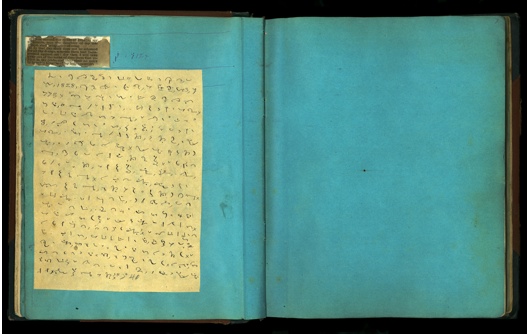On this page can be examined yet another example of the cryptic looking handwriting found in the 1870's Mormon "Scrap - Book" in which the sacred John Whitmer 6 May 1877 Book of Mormon handwritten testimony was found to exist. The investigative means by which this author sought to employ constituted a completely perplexing conundrum that seemed quite daunting and hopeless from the very beginning and onset, past the initial revelation and discovery of the journal itself.
It certainly was a circuitous path melded that combined with a series of unique circumstances that appeared as random mere happenstance that subsequently and most formidably prevailed over several years time which allowed for a veritable conclusion to be ascertained and drawn by this author.
The series of actions ultimately revealed that the unknown text found in the "Scrap - Book" journal was in fact, a form of 'lost' Pitman shorthand; more finitely known as "Early Pitman's Shorthand."
Early Pitman shorthand was the original form of the revolutionary shorthand transcription method devised and invented by Isaac Pitman of England in 1837. It was originally referred to as "Stenographic shorthand," and the method became revolutionary in producing the speedy transcription of dictated words and in making transcripts of court records, but by the 1880's was supplanted by the new post-1857 form of Pitman shorthand that had been finally fully devised after Isaac Pitman's company reorganized in 1886 as Isaac Pitman & Sons, Ltd.
By this time, what had began as minor changes in the Pitman basic form in 1857, became dramatically altered by 1886, where the original "Early Pitman's Shorthand" and the "New Pitman's Shorthand" were essentially totally unrecognizable between the two.
Early-on, about fifteen years after the late 1830's introduction of Pitman shorthand or "Stenographic shorthand" in England materialized, Isaac Pitman sent his brother Benn Pitman to the United States of America to become the sole primary proponent in the United States at teaching, marketing and promoting the use of the original or "Early Pitman's Shorthand." Back in England between the years 1843 and 1852 Benn Pitman had acted on behalf of his brother Isaac's concern and lectured about the Pitman shorthand method and even helped his brother Isaac compile the textbooks that came to be published on the fast becoming widely adopted "phonographic" method and system. So, when Benn Pitman first arrived in the U.S. with his wife Jane and their two children in January of 1853, Benn Pitman was already more than well versed on the subject. Initially settling in Philadelphia, Benn Pitman and his family soon removed themselves to Cincinnati, Ohio, where Pitman soon founded the Phonographic Institute there.
At first Benn Pitman published his brother Isaac's shorthand textbooks in the U.S., giving him full credit for the system. Then in 1857, when Isaac and his co-laborers made certain changes in the system back in England, Benn Pitman stubbornly refused to adopt them in the United States. Benn Pitman felt that his brother's original system was better, so the original "Early Pitman's" system became the Pitman shorthand system which was adopted in the United States, because that is what he promoted.
Two years before, in 1855, Benn Pitman had invented the electrochemical process of relief engraving in the United States, and such was adopted to print the textbooks promoting the "Early Pitman's Shorthand." When the new method was devised back in England in 1857, retooling new printing plates to print up a newer version also caused Benn Pitman to more carefully think to not wholeheartedly adopt the newer form of stenography that his brother Isaac had developed.




